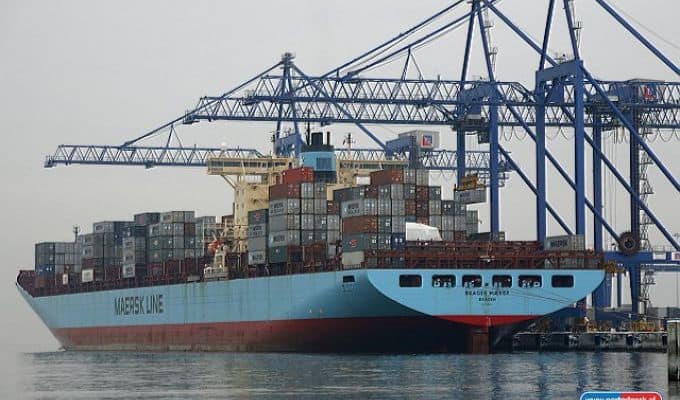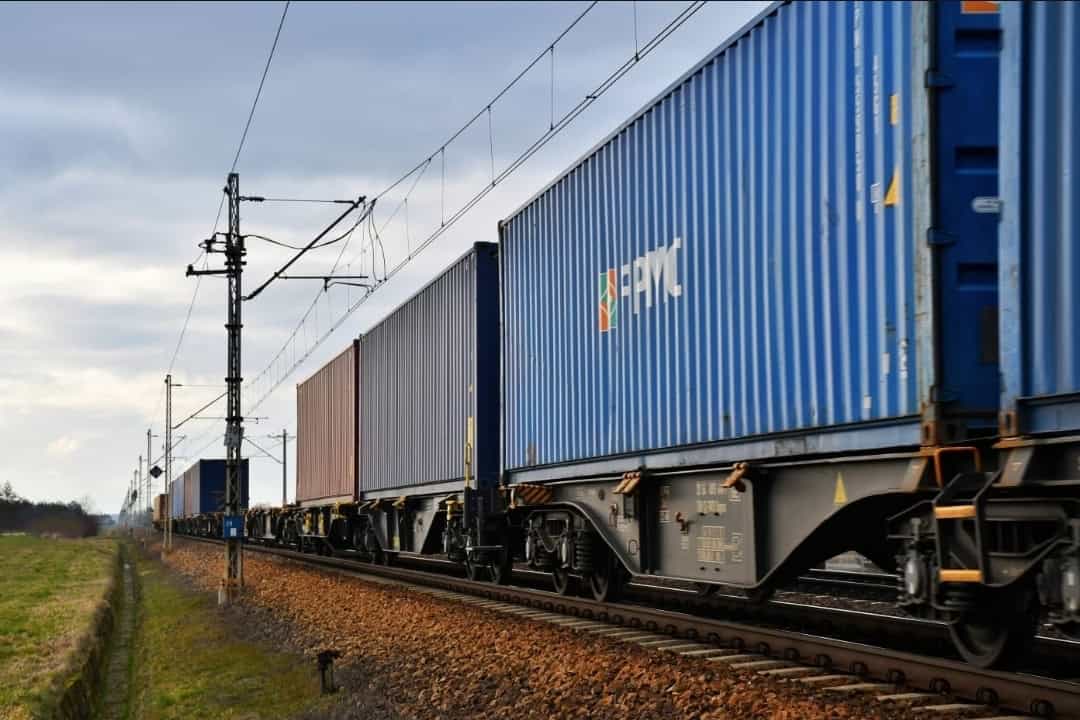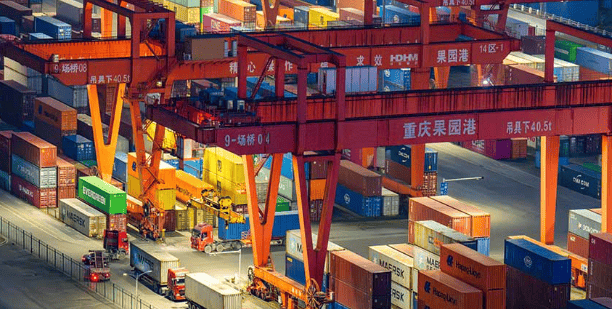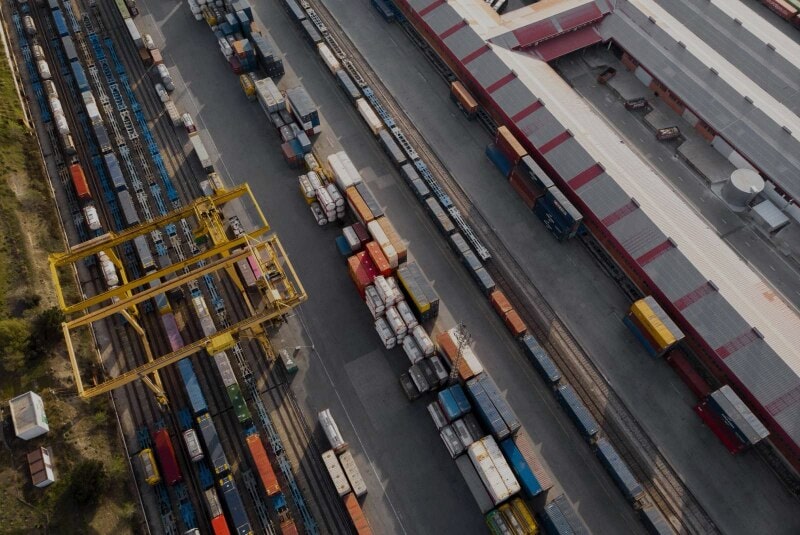The Port of Gdańsk ended the first half of 2025 with very good results, both in terms of cargo volumes and financial performance. Over 38.3 million tonnes of cargo passed through the quays, representing an increase of 0.4 per cent compared to the same period last year. Net sales profitability stood at 56%, and the net profit generated during the first half of the year amounted to PLN 179.6 million, which represents an increase of 40% compared to the same period in 2024.
Liquid fuels continue to have the largest share in the cargo handling structure, accounting for 50 percent of the total volume. A decrease in domestic demand for energy resources due to a milder winter, combined with the current geopolitical situation in the region, has reduced the need to accumulate strategic reserves. Despite this, liquid fuel handling at the Port of Gdańsk in the period under review was only 4.7 percent lower compared to the same period in 2024. These operations are primarily carried out by the company Naftoport and, after the first six months of 2025, reached a volume of 19.2 million tonnes.
General cargo took second place, with handling volumes increasing by 12 percent to reach 13 million tonnes. Within this category, containerized cargo rose by 14 percent, translating to approximately 11.6 million tonnes of goods handled.
A significant contributor to the increase in containerized cargo volume was the launch of new shipping routes by the Mediterranean Shipping Company (MSC) – one of the world’s largest container shipping lines. In the first half of 2025, the Port of Gdańsk became a new hub in MSC’s Asian service map – specifically within the Britannia and Albatros services – offering regular connections with ports in China, South Korea, and Vietnam. The inclusion of the Port of Gdańsk in MSC’s global network not only boosted the volume of container transshipments but also significantly enhanced the port’s attractiveness in the eyes of international logistics operators. This is also an important step in strengthening the Port of Gdańsk’s position as a strategic container hub in the Baltic Sea and the Central and Eastern European region.
The Port of Gdańsk is developing dynamically, particularly in the segment of containerized general cargo handling, supported by the expansion of the Baltic Hub Container Terminal (BHCT) – the largest container terminal in the Baltic Sea. With the commissioning of the new T3 terminal, BHCT’s handling capacity has increased by as much as 1.5 million TEU (from approximately 3 million to 4.5 million TEU).
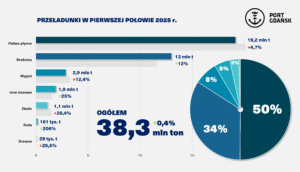
A significant increase of as much as 25 percent was also recorded in the group of so-called other bulk cargo, which reached a volume of 1.9 million tonnes. Particularly notable was the sharp rise in low-volume ore transshipments – up by 206 percent compared to last year – marking the highest percentage growth among all cargo categories.
As forecasted, lower handling volumes were observed for coal, which reached approximately 2.9 million tonnes – a decline of 12.4 percent compared to the same period last year. Grain transshipments also decreased over the past six months, totaling just over 1.1 million tonnes, a drop of 26 percent.
Overall, the first half of 2025 brought a positive balance for the Port of Gdańsk. A diversified cargo structure and the dynamic development of the container segment highlight the port’s growing importance on the global maritime logistics map.
“The Port of Gdańsk is consistently and pragmatically building its position as a regional leader in the Baltic Sea,” emphasizes Dorota Pyć, President of the Port of Gdańsk. “The dynamic growth of the container segment, a stable position in fuel handling, and the increase in bulk cargo volumes show that we are responding flexibly to changes in the economic, social, and geopolitical environment. All of this contributes to the company’s stable financial standing and confirms that investments in port infrastructure, technology, and new logistics directions are delivering measurable results and building the Port of Gdańsk’s resilience – both today and for the future.”
